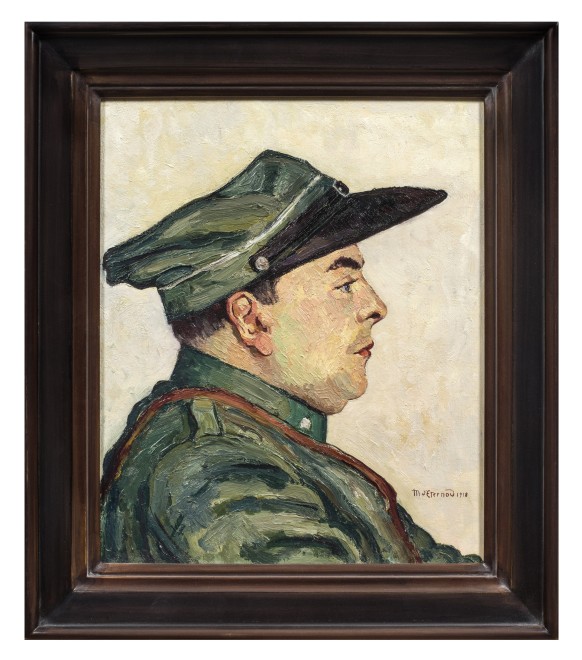Provenance
Private collection, Switzerland
The swiss artist Marcel Victor d’Eternod studied with Ferdinand Hodler (1853-1918). His name erives from the hamlet of Eternod which is in the Aosta Valley in Italy close to the Swiss border. After his time in Geneva with Hodler from 1913 to 1914, d’Eternod also studied in London, Edinburgh, and Paris. Additional travels later took him to Tunisia, Morocco (fig. 1), Italy, and Spain. D’Eternod produced mainly landscapes, often of spacious Swiss mountain views (figs 2a-d) as well as portraits. The latter from the early years of the20th century (figs. 3a-b), like the present example, show the influence of Hodler in their directness and application of thick paint. The subject matter of a man in uniform hadbeen famously treated by Hodler in 1915 (fig. 4), but it is certainly possible that Eternod also knew the uniformed figures of Vincent van Gogh and Max Liebermann, whose very brushy, powerful works were owned by the Swiss collector Georg Reinhart (figs. 5a-b). Like the Hodler prototype, this unknown soldier is shown in profile against a plain background. Also, as with Hodler, the collar of the uniform comes right up to under the sitter’s neck, and the creases of the sleeves are emphasized. D’Etermond, however, portrays his soldier wearing a sharply projecting cap that gives his composition an added sense of dynamism contrasting with the man’s passive features. Although Switzerland remained neutral during World War I, the army (fig. 6) was mobilized to protect the borders, and thus this individual is still in uniform in 1918.
